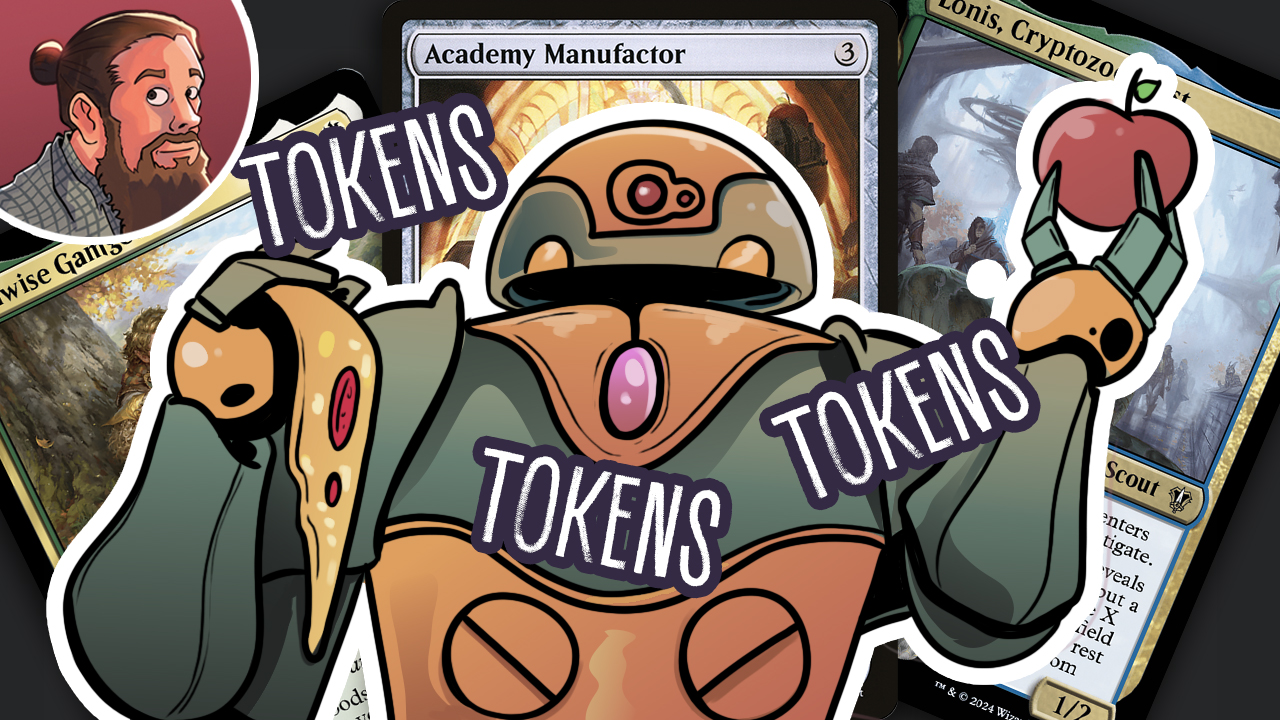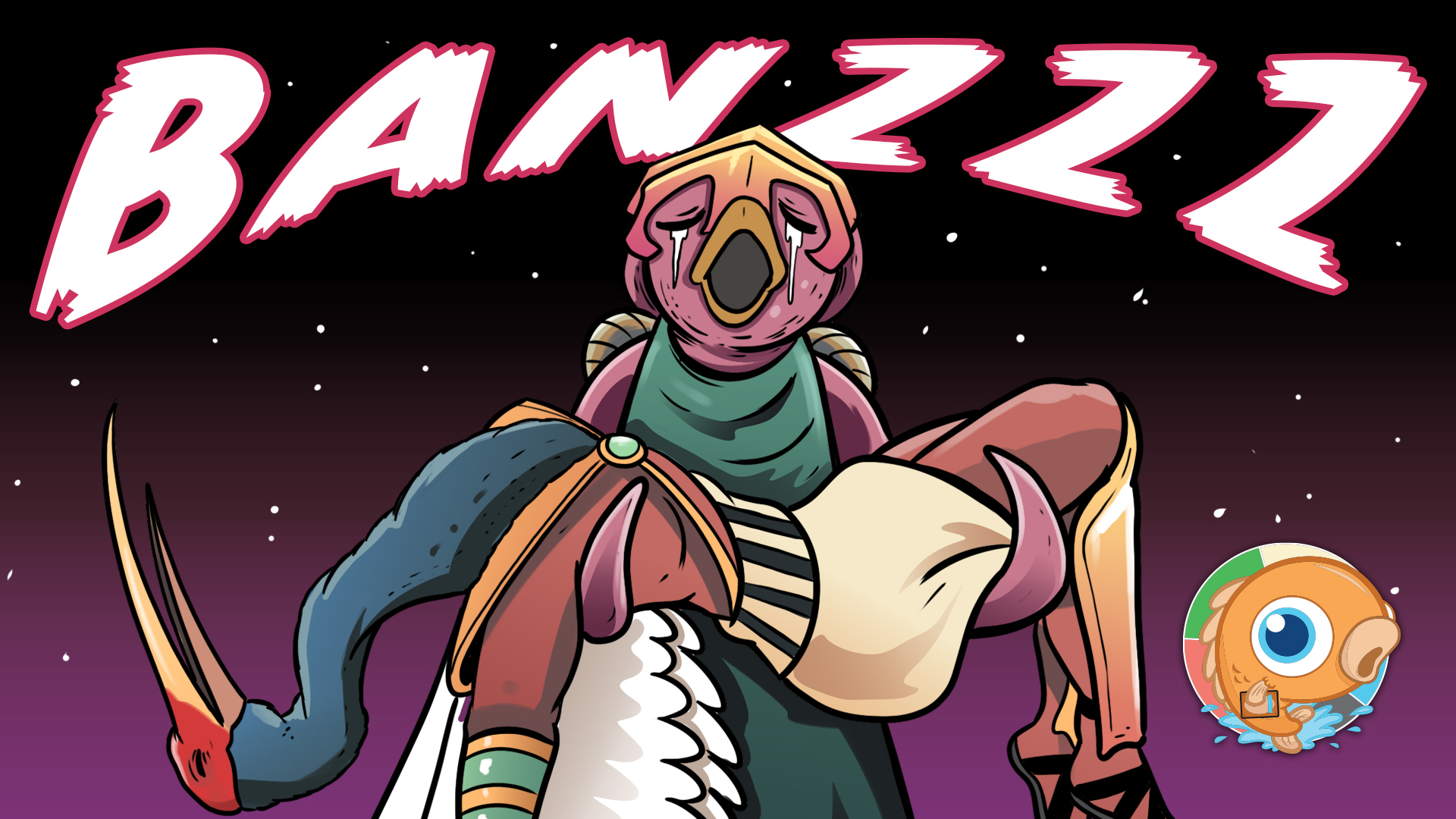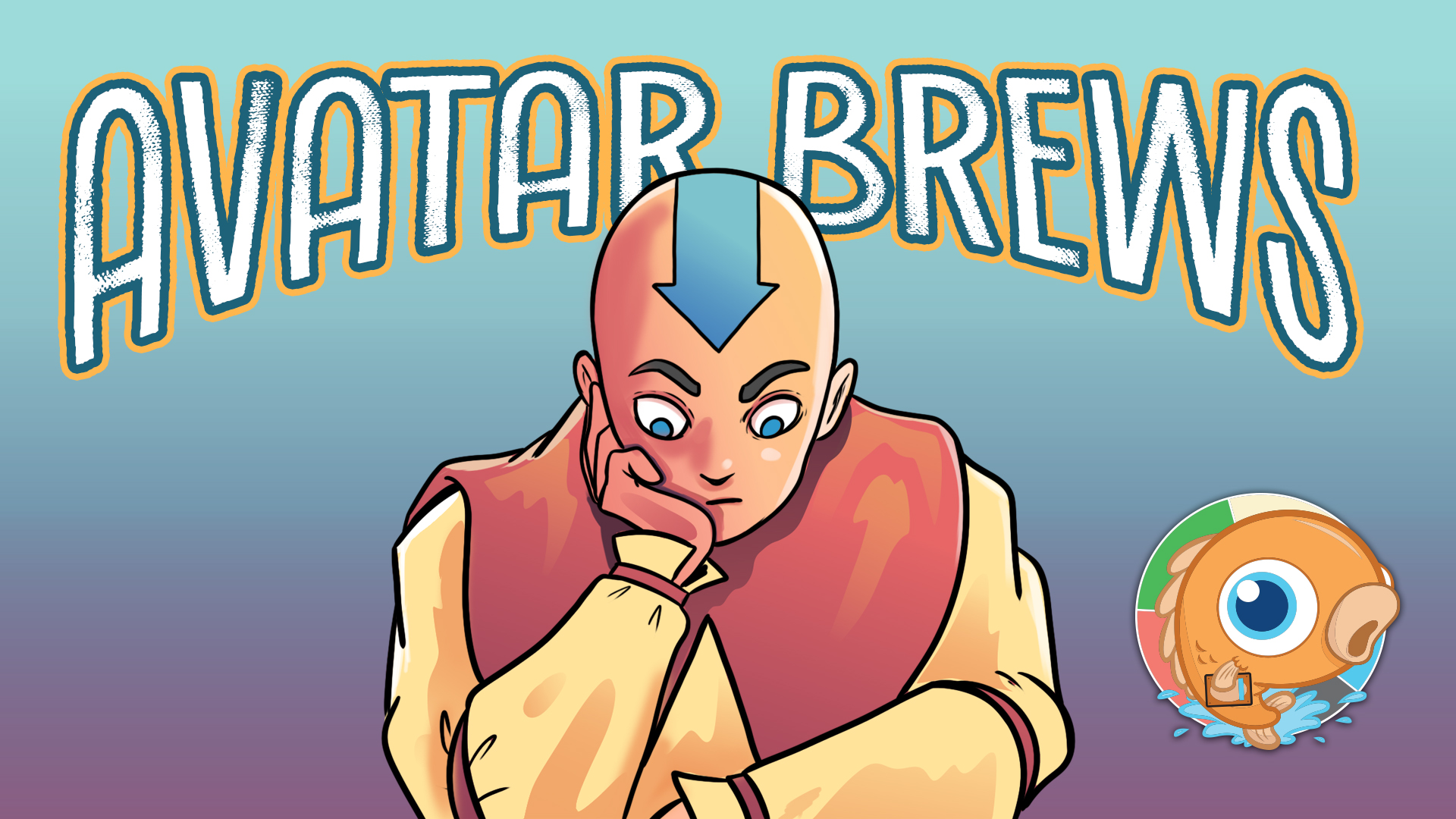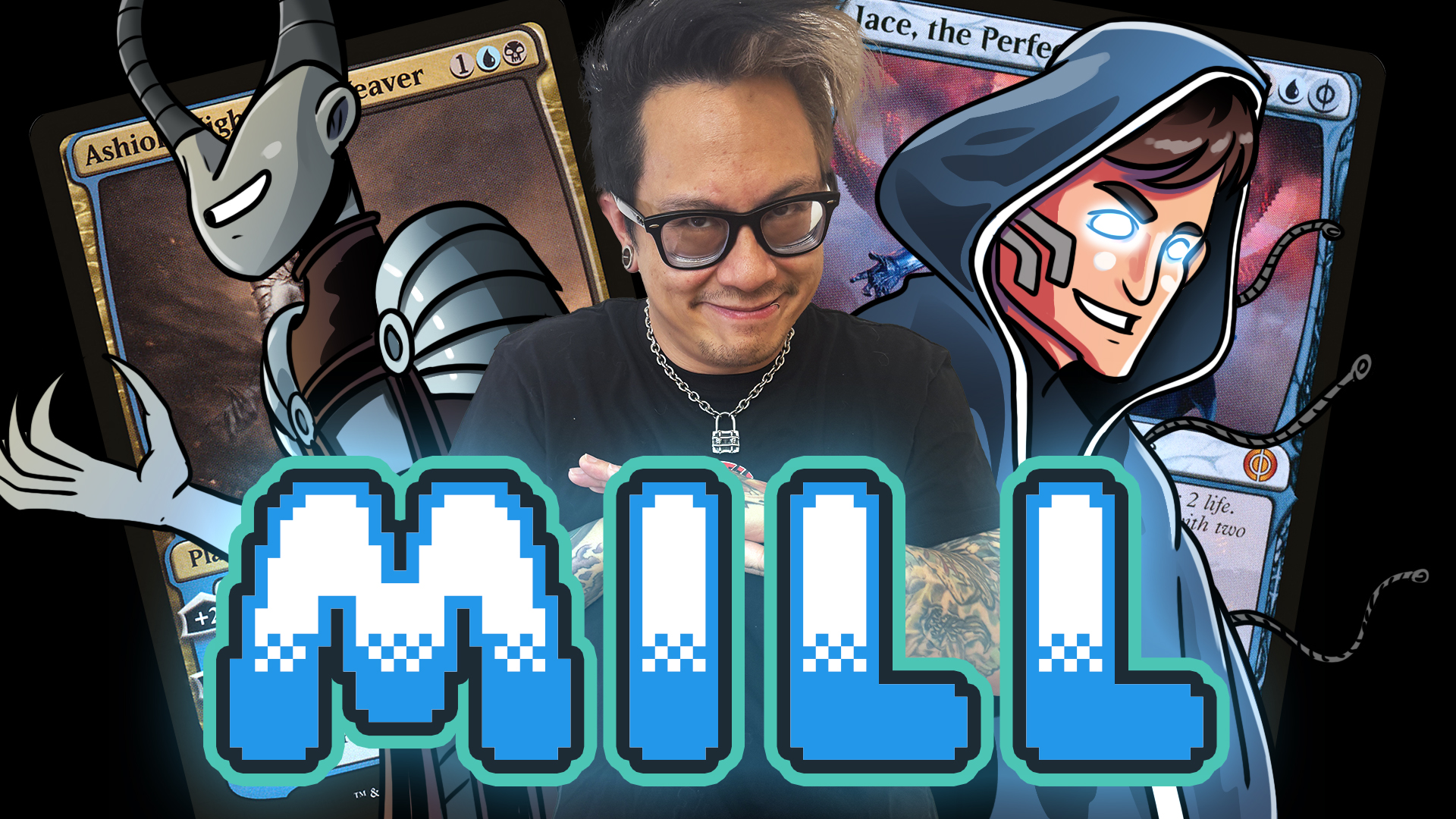Magic Empathy
Today we're going to discuss an important concept in competitive Magic: Empathy. But first, we'll need some definitions so that we're all on the same page:
Empathy
the capacity to understand what another person is experiencing from within the other person's frame of reference, i.e., the capacity to place oneself in another's shoes – Wikipedia
Magic Empathy
the capacity to understand what your opponent is experiencing from within their frame of reference, i.e. the capacity to place yourself in their shoes to manipulate, outplay, and destroy the – me plagiarizing Wikipedia
To illustrate Magic Empathy and why it's important, I'm going to go over the "levels" players typically go through as they improve at Magic, in the order of increasing Magic empathy, i.e. an increased understanding of their opponent's perspective.
The Levels of Magic Empathy
Level 0: You play to the board. If your opponent attacks their 5/5 into your 6/6, you snap block. Silly opponent for making that play, he probably just forgot his numbers.
Level 1: You let fear enter your heart. Gosh-darn. Every time my opponent attacks his 2/2 into my 3/3, I block and get ‘blown out’ by giant growth. I'm sick of this. I'm not falling for his tricks; I'm too smart for that, I'm not blocking.
Note: Level 1 is the worst. Yes, worse than level 0. Players, especially new players, are afraid of being made to look foolish.
Level 2: You have a general sense of when it is correct to play around a trick or not, but don’t think enough in terms of specific cards. I understand when my opponent attacks his 2/2 and 3/3 into my 3/3 and 4/4 he almost certainly has a trick, but I'll block anyway since I have to get that trick out of his hand somehow. Unless my guy is really important, then maybe I respect his trick.
Note: Most Magic players never advance significantly beyond level 2.
Level 3: You know all the cards in the format and understand everything your opponent could have and make plays accordingly. My opponent attacking his 2/2 and 3/3 into my 3/3 and 4/4 doesn’t make a lot of sense, unless he has a very small subset of cards in the set where it does make a lot of sense. If he had removal, he probably would cast it precombat unless he is hoping I make unusual blocks. So he likely has a trick, but a single trick doesn’t make much sense, unless it’s a trick that affects multiple creatures like dauntless onslaught or coordinated assault. He's in an aggressive white red deck and I remember passing both those cards during the draft. I'm still at a relatively high life total. Instead of making the obvious blocks, I could double block the 2/2; if he has dauntless onslaught or coordinated assault, he loses his guy and his trick for just one of my guys. I could also double block the 3/3, but I decide against that since he would simply let damage resolve and we would trade 3/3s.
Note: Levels 3+ require not only an understanding of your opponent's perspective, but also of probability.
Level 4: You know how to bluff. By thinking from your opponent's perspective, you know when it is unlikely for your opponent to call. You also think how your opponent would have played differently if he had different cards, can adjust the probability of cards he/she likely has and make more informed plays, and also consider not just the information gleaned from the current board state, but the information from each past board state as well. I know my opponent is a reasonable player and tries to avoid getting blown out, so I attack my monastery swiftspear into his board of monastery swiftspear + Zurgo bellstriker while he is tapped out and I have 1 open mana. If he blocks with zurgo bellstriker my guy simply dies, but I expect that my opponent will not block because he respects that I could wild slash his monastery swiftspear to activate prowess to kill zurgo bellstriker (even though I do not actually have wild slash). I don’t want to hold back monastery swiftspear because earlier plays suggest he has a wild slash in hand.
Level 5: You know how to call. You understand that your opponent understands when it is correct to bluff and adjust the probabilities of how you respond accordingly. You see inside the infinite sequence of you know that they know that you know that they know you, or they could be bluffing…. summing the possibilities to reach the probabilistic perfect response. You remember every card you passed in draft and where each player was seated to calculate card possibilities with unprecedented accuracy. When no outs remain in your deck, you know how to play in such a way as to maximize the probability your opponent snatches defeat from the jaws of victory. You enter the matrix and see clearly the 0s and 1s written in each play and gesture. You are a peerless master. My opponent is attacking his monastery swiftspear into my zurgo bellstriker + Monastery swiftspear board. I know my opponent well and believe he would make this attack regardless of whether or not he actually has a wild slash. He played lightning berserker on turn 1 rather than hold up wild slash which makes me think he doesn’t actually have wild slash and is bluffing instead. I have 2 goblin rabblemaster in hand and wild slash is going to be annoying regardless. I'll block expecting to sometimes eat his guy, but even if he had wild slash or topdecked it, it's not that bad.
Before we proceed, a note on ‘fancy play syndrome’
Fancy Play Syndrome: Trying to play on a higher level than your actual skill level and as a result, making bad ‘fancy’ plays. You can understand the logic behind the higher levels of play, but successful execution is very difficult and slight miscalculation (suppose we live in an alternative universe where red decks often play 2x crowd's favor in the level 4 scenario) can have disastrous consequences. I admit to falling victim to this syndrome even now. Be wary. Keep in mind just because you have mastered levels 3-5 thinking, you will often/almost always find yourself making the exact same plays as one of the lower levels of thinking would dictate.
Back to Magic empathy. True Magic empathy, put another way, is thinking at Level 3+. We see that the higher levels involve more advanced ways of thinking from your opponent's perspective. That's the difference between levels 2 and 3 – it's playing around the specific tricks that actually exist in the format rather than ‘some trick’. To truly put yourself in your opponent’s shoes, you need to understand the cards that exist. Even the best player in the world won’t be able to successfully get to level 3+ thinking without knowing all the revelant cards and knowing that they know all the relevant cards. This is where Magic requires hard work and practice; you need to learn all the tricks in the format before you can reasonably apply level 3+ thinking.
Example Scenario 1
Both players are at 15+ life. My opponent has mardu scout (3/1) and a graceblade artisan (2/3) and has just rebounded an artful maneuver targeting his mardu scout (5/3). I have wandering tombshell (1/6) and silumgar butcher (3/3) (he cast artful manuever to save graceblade artisan from silumgar butcher's trigger). He plays his 5th land to have 2 plains and 3 mountains, and he attacks with both his guys. Let's examine what we might be thinking, based on level.
Board:
![Mardu Scout [FRF]](http://cdn1.mtggoldfish.com/images/gf/Mardu%2BScout%2B%255BFRF%255D.jpg)
![Artful Maneuver [DTK]](http://cdn1.mtggoldfish.com/images/gf/Artful%2BManeuver%2B%255BDTK%255D.jpg)
![Graceblade Artisan [DTK]](http://cdn1.mtggoldfish.com/images/gf/Graceblade%2BArtisan%2B%255BDTK%255D.jpg)
vs
![Wandering Tombshell [DTK]](http://cdn1.mtggoldfish.com/images/gf/Wandering%2BTombshell%2B%255BDTK%255D.jpg)
![Silumgar Butcher [DTK]](http://cdn1.mtggoldfish.com/images/gf/Silumgar%2BButcher%2B%255BDTK%255D.jpg)
Level 0: 1/6 blocks 5/3 (bounce), 3/3 blocks 2/3, win!
Level 1: He just loses his 2/3 if he doesn’t have a trick. He must have a trick and I don’t want to get blown out so I'll take 7.
Level 2: Typically makes one of 3 blocks: the level 0 block, 1/6 blocks 5/3 (take 2), 3/3 blocks 2/3, take 5.
Level 3: Red tricks from DTK that make sense: twin bolt, kindled fury, volcanic rush. White tricks from DTK that make sense: Artful maneuver, Enduring Victory, Scale Blessing, surge of righteousness (post side). Red tricks from FRF that make sense: war flare, abzan advantage, honor’s reward, sandblast.
Given those tricks, let's isolate the most dangerous:
War flare and Enduring victory: These are both pretty brutal 2-for-1s, with enduring victory commonly leaving a +1/+1 counter behind.
![War Flare [FRF]](http://cdn1.mtggoldfish.com/images/gf/War%2BFlare%2B%255BFRF%255D.jpg)
![Enduring Victory [DTK]](http://cdn1.mtggoldfish.com/images/gf/Enduring%2BVictory%2B%255BDTK%255D.jpg)
Twin bolt: trading twin bolt/graceblade artisan for meandering tombshell/silumgar butcher is not a full blowout, but certainly wouldn't be great; it’s a 2-for-2 but is excellent tempo.
![Twin Bolt [DTK]](http://cdn1.mtggoldfish.com/images/gf/Twin%2BBolt%2B%255BDTK%255D.jpg)
Volcanic Rush: This card is pretty bad but it’s important not to forget cards. A 2-for-2 without the tempo swing that twin bolt provides.
Cards that bolster: These aren’t necessarily the most common maindeck, but all would certainly justify the attack.
![Honor's Reward [FRF]](http://cdn1.mtggoldfish.com/images/gf/Honor%2527s%2BReward%2B%255BFRF%255D.jpg)
Sandblast/surge of righteousness/kindled fury: These may justify the attack, but are simple 1-for-1s.
![Surge of Righteousness [DTK]](http://cdn1.mtggoldfish.com/images/gf/Surge%2Bof%2BRighteousness%2B%255BDTK%255D.jpg)
Multiple Tricks: Kindled Fury + Aeriel maneuver, etc.
![Kindled Fury [DTK]](http://cdn1.mtggoldfish.com/images/gf/Kindled%2BFury%2B%255BDTK%255D.jpg)
Now knowing the possible tricks, let's pretend our opponent has those tricks and examine our best possible blocks:
War Flare: Double block on the 2/3 or single block 1/6 on 5/3.
Enduring Victory: It really depends on your exact hand. One of the single blocks. 3/3 on 2/3 forces the trick and leaves the 1/6 which blanks the 3/1 on future turns and can also hold off the 3/4 assuming bolster goes on graceblade artisan.
Twin Bolt: Probably single block 3/3 on 2/3.
Bolster tricks: Probably 1/6 on 5/3; if they bolster onto mardu scout, at least you can still trade with silumgar butcher.
The 1-for-1 tricks: Obvious block is correct.
Multiple Tricks: Obvious block is likely correct.
Bluff: Obvious block is correct.
The tough part about this block is that even with all of this thinking, the answer isn’t obvious. A lot would depend on the actual cards seen in draft, if this is a game 2 or 3 where you have seen any of the above tricks, and the cards in your hand. If my hand was weak I'd probably make the obvious level 0 block to maintain a high life total. If my hand was strong I'd probably block the 1/6 on the 5/3 and take 2 to prevent blowouts while keeping my life total high (but doesn’t force my opponent to use any trick).
Level 4/5: We thought through all the tricks given the board state, but now we should think how my opponent could have possibly played differently if he had those tricks. Our opponent recently made three decisions:
- He chose to save his 2/3 with a pump spell
- He chose to rebound on the 3/1 rather than the 2/3, and
- He chose to play his fifth land pre-combat.
1. The fact that he chose to save the 2/3 with a trick means little, although it is worth noting the 2/3 does little on this board as is.
2. Let's say he had instead used rebound on the 2/3, then attacked with just a 4/5; the obvious block is the 1/6. Plenty of tricks kill the 1/6 here, but those same tricks could’ve also killed our 3/3 silumgar butcher if he made the other attack. It is worth noting that our opponent may prefer to kill the 1/6 and would like to leave back the 3/1 to block silumgar butcher, so it's very reasonable for our opponent to have something like a second artful maneuver if they make this play. If he had temur battle rage, he would likely have rebounded on the 3/1 and attacked with just that.
Now let's consider if he rebounds on the 2/3 and attacks with 3/1 and 4/5. The obvious block would have been 1/6 on 3/1 and take 4. The vast majority of tricks still don’t make sense – targeting mardu scout with the rebound on artful maneuver would be better. However, it would make a lot more sense if he had, say, exactly surge of righteousness. If he has surge of righteousness and chose to rebound on mardu scout and we make the obvious block, the end result is we have a 1/6 and take 0. If instead he rebounds on graceblade artisan and we make the obvious block, we have a 3/3 and take 4. Considering he has a 3/1, it's very reasonable that he would rather kill the 1/6 as he probably has many other spells that can deal with the 3/3. Given this, we can deduce that it is reasonably less likely that he has surge of righteousness in hand given his choice of rebound targets. Although, considering surge of righteousness means it's a post sideboard game and we would have much more information on his possible tricks.
3. The fifth land definitely changes the math of how we block because of the possibility of enduring victory. However, if they just have something like kindled fury, our opponent wants to entice us to a single block as much as possible; therefore, he would make his land drop to reduce the likelihood we make the obvious ‘level 0’ block. If our opponent has exactly war flare, he may want us to block, in which case, he might not play the 5th land pre-combat because it reduces the likelihood of the ‘obvious’ block because it puts enduring victory into our minds. It is also possible that our opponent has war flare and doesn’t want us to block because maybe he has a bunch of creatures or something like secure the wastes. It's also very possible he just wasn’t putting this level of thought into his land drop (highly likely unless you know your opponent is a very skilled playing an untimed top8 round).
This particular example reveals that level 4/5 thinking is a lot of work and often gets you little, but small edges in Magic can mean a lot.
Fancy play syndrome would be knowing your opponent is very skilled, and, as the r/w player, making the attack with the 5/3 and 2/3 with no trick at all, thinking your opponent will respect the blowout of enduring victory/war flare not thinking through they are likely to realize that possibility and block anyway.
Example Scenario 2
I'm playing a sideboarded game with Atarka Red vs Mono Red against someone I know understands the (pseudo) red mirror well. I have an odd list where I have to keep lightning berserker postboard because I don’t have enough reasonable sideboard cards. I have already sided out foundry street denizen and goblin heelcutter. I'm on the draw and see the following hand:
![Monastery Swiftspear [KTK]](http://cdn1.mtggoldfish.com/images/gf/Monastery%2BSwiftspear%2B%255BKTK%255D.jpg)
![Monastery Swiftspear [KTK]](http://cdn1.mtggoldfish.com/images/gf/Monastery%2BSwiftspear%2B%255BKTK%255D.jpg)
![Atarka's Command [DTK]](http://cdn1.mtggoldfish.com/images/gf/Atarka%2527s%2BCommand%2B%255BDTK%255D.jpg)
![Lightning Berserker [DTK]](http://cdn1.mtggoldfish.com/images/gf/Lightning%2BBerserker%2B%255BDTK%255D.jpg)
![Mountain [KTK]](http://cdn1.mtggoldfish.com/images/gf/Mountain%2B%255BKTK%255D.jpg)
![Mountain [KTK]](http://cdn1.mtggoldfish.com/images/gf/Mountain%2B%255BKTK%255D.jpg)
![Stoke the Flames [M15]](http://cdn1.mtggoldfish.com/images/gf/Stoke%2Bthe%2BFlames%2B%255BM15%255D.jpg)
My opponent plays mountain go. On my turn I draw a mountain and play lightning berserker, hoping that he will wild slash it (which is why I didnt play monastery swiftspear). He declines, plays a second mountain and plays both monastery swiftspear (attacking) and zurgo bellstriker, essentially telegraphing that he does in fact have wild slash.
On my turn, I draw another mountain, play a monastery swiftspear, and attack with both my creatures. Note that I am running a bluff here — if my opponent blocks monastery swiftspear, my monastery swiftspear just dies. However, that block is very dangerous because my opponent would get blown out by wild slash on his monastery swiftspear with prowess on my monastery swiftspear. My opponent blocks zurgo bellstriker on lightning berseker and I pump to trade.
My opponent untaps and casts goblin rabblemaster. I lose shortly thereafter.
The question is: was I a victim of fancy play, or did I choose a solid line? To answer that question, we need to understand the probability of our opponent following up with land + goblin rabblemaster. The probability of at least one goblin rabblemaster is approximately ¼, and the probability of 1 land given one goblin rabblemaster is about 2/3, so the overall probability our opponent can follow up with rabblemaster is about 1 in 6. Let's estimate the odds of the free goblin token mattering are medium at 1 in 4. The odds that the 1 point of damage we snuck in mattering are low – say 1 in 20.
By not attacking, 5/6 of the time say we lose 5% to win, but 1/6 of the time we gain 25% to win. That suggests our win % will be about the same regardless of what line we take. (The numbers are made up for this example)
There are a ton of factors we didn’t calculate such as the possibility our bluff attack goes wrong, or the possibility that our opponent has the goblin rabblemaster but waits to play it because he thinks we have a wild slash due to our bluff.
It's also possible that I wasn’t even close to the correct line. Say I go turn 1 monastery swiftspear attack (and it gets wild slashed). Turn 2 monastery swiftspear no attack after my opponent goes zurgo bellstriker+monastery swiftspear. He can goblin rabblemaster, but if I have wild slash I get to kill goblin rabblemaster and fog for the turn, or perhaps even better, block his monastery swiftspear after attacks and take 3. If he simply attacks without casting goblin rabblemaster, I can snap block monastery swiftspear, and he can cast burn targeting me but it's still a 1-for-1. The problem is if he casts hordeling outburst or dragon fodder, but even then he has to respect the play of wild slash a token and eat zurgo bellstriker.
Wrap Up
While our discussions in the example scenarios didn’t necessarily yield conclusive answers, hopefully they reveal the level and type of thought that can go into seemingly simple situations in relatively uncluttered board states. Also, for all those aggressive-archetype players out there, hopefully you can point your friends who think your archetype is skill-less to some evidence to the contrary.
In terms of 'leveling up' your Magic empathy, I would recommend first spending time simply playing and trying to memorize the tricks. Next, play against someone better than you in an untimed situation and just carefully take the time to consider the possibilities. As you practice, your speed will improve and you'll be able to employ these concepts in actual tournaments. I choose to play Infect partially because even with practice, thinking through all the possibilities can be tough, and I didn't want to go to time in my rounds ;)
Until next time – may you learn empathy.
- MrPhysics













